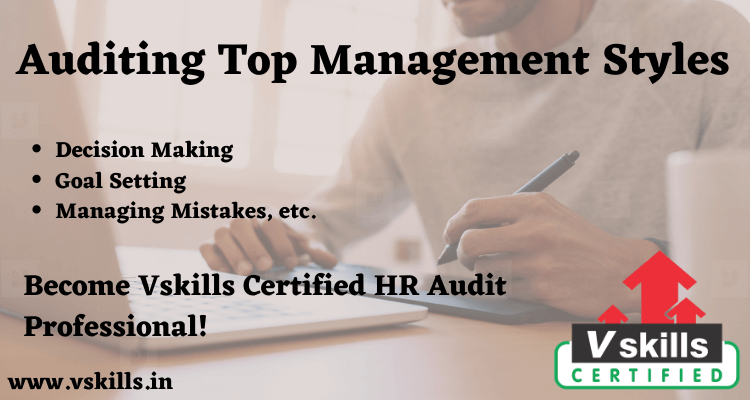
Top management styles have been found to impact the development of competencies and competency culture in the organization. The top management here are defined as all those who matter and who set policies, trends, discipline, habits and culture in the organization by virtue of their position, power, roles, and responsibilities. Its valuation dimensions are listed below.
Decision Making
- Style Dimension: Reasons for decisions are given, debated and discussed to promote development among employees.
- Evaluation dimensions
- Methods of taking decisions.
- Involvement of juniors in taking decisions for their development.
- Negative and positive impact of using developmental style of decision making.
Goal Setting
- Style Dimension: Goal setting is done to learn from each other and employees are encouraged to discuss and gain from each other.
- Evaluation dimensions
- Methods of goal setting.
- Involvement of juniors in goal setting for their development.
- Negative and positive impact of using developmental style of goal setting.
Managing Mistakes
- Style Dimension: When mistakes are made they are used as learning experience.
- Evaluation dimensions
- Methods of managing mistakes.
- Number of managers using developmental ways to manage mistakes.
- Negative and positive impact of using developmental ways.
Managing Conflicts
- Style Dimension: When conflicts occur, concerned teams and employees are encouraged to sort these out themselves and grow.
- Evaluation dimensions
- Methods of managing conflicts.
- Number of managers using developmental ways to manage conflicts.
- Negative and positive impact of using developmental ways.
Rewards and Recognition
- Style Dimension: To encourage learning and development.
- Evaluation dimensions
- Methods of rewarding and recognizing people and their contributions.
- Number of managers using developmental ways to manage rewards and recognition.
- Negative and positive impact of using developmental ways.
Conducting Meetings
- Style Dimension: Meetings are used to help employees learn.
- Evaluation dimensions
- Methods of conducting meetings.
- Number of managers using developmental ways to conduct meetings.
- Negative and positive impact of using developmental ways.
Policy Formulation
- Style Dimension: Employees are communicated with and encouraged to learn policy formulation than keep the policy secret.
- Evaluation dimensions
- Methods of policy formulation.
- Number of managers preparing policy with involvement of employees.
- Negative and positive impact of using developmental ways.
Communications
- Style Dimension: There is open communication and employees are encouraged to learn rather than be secretive.
- Evaluation dimensions
- Methods of communication with juniors and others.
- Nature of language used encouraging information sharing, learning or is coercive.
- Number of managers communicating using developmental ways.
- Negative and positive impact of using developmental ways.
Top Management Works as a Team
- Style Dimension: It sets role model for others.
- Evaluation dimensions
- Ways in which the managers work as a team.
- Number of managers working as a team to set examples for others.
- Negative and positive impact of using developmental ways.
Top Management is a Reflective and Self-Renewing Team
- Style Dimension: They undertake self-renewal exercises and use 360 degree feedback and other mechanism as learning experiences.
- Evaluation dimensions
- Provision of opportunity by top management to itself to review, reflect and review itself.
- Seeking and using feedback from juniors.
- Sharing of self-renewal results and experiences with others to promote learning culture.
- Impact of self-renewal, review and reflection exercises on the organization.
- Methods of receiving feedback- receptive, reflective or change oriented.
- Learning from own mistakes.
Top Management Style Assessment Methods
- Interviews of juniors of each of the top management: Interview can be group interview or individual interview. It can be conducted to assess the above dimensions of the top management style can be framed.
- Questionnaire: 360 degree feedback can be used. If it cannot be used then 180 degree appraisal by self and direct report can be used. Self assessment on the Leadership Style questionnaire can be used.
- Observation: Observing some of the meetings or discussions conducted by top management in their own rooms or in their departments with juniors, and assess the ways they set goals, make decisions handle mistakes and conflicts.
- Secondary Data: Report on previous surveys conducted on the styles or 360 degree feedback or employee satisfaction surveys, climate surveys, etc.


